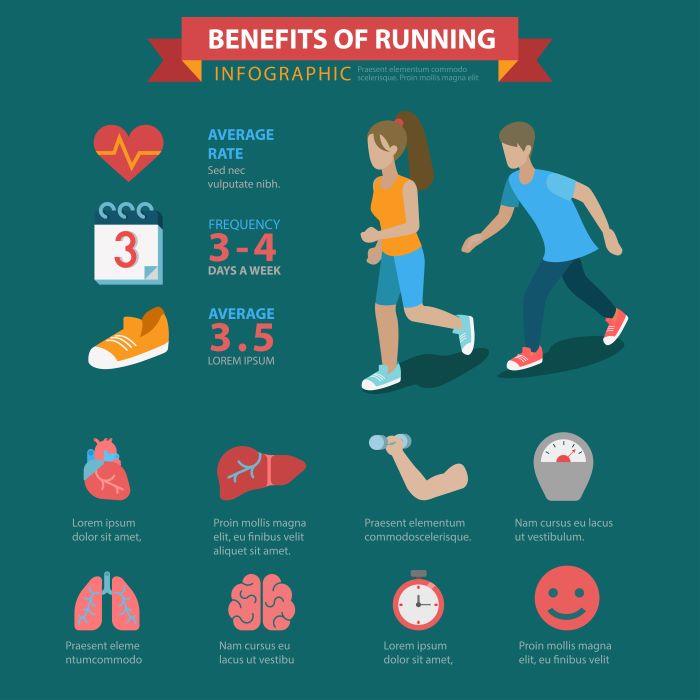Embarking on a 16 week half marathon training plan is an exciting journey for both novice and seasoned runners. This structured program not only helps you build endurance but also enhances your overall fitness level, ensuring you cross that finish line in under two hours.
As you dive into this training regimen, you’ll discover that it encompasses a variety of workouts tailored to improve your speed and stamina. The program will include:
- Long runs: These are crucial for building your aerobic capacity.
- Speed workouts: Incorporating intervals and tempo runs to enhance your pace.
- Cross-training: Activities such as cycling or swimming to prevent burnout and reduce injury risk.
- Rest days: Essential for recovery and muscle repair.
Moreover, this training schedule is designed to gradually increase mileage and intensity, allowing your body to adapt while keeping you motivated. Setting a personal goal, such as aiming to finish in under two hours, can add an extra layer of excitement to your training.
To kickstart your adventure, visit our website to learn more and get started today! Click here.
Understanding the Goal of Running Under 2 Hours

Setting a goal to run a half marathon in under two hours is a significant achievement that requires dedication, discipline, and a well-structured training plan. This target translates to maintaining an average pace of approximately 9 minutes and 9 seconds per mile, which can be both challenging and rewarding.
Understanding this goal involves recognizing several key elements:
- Endurance: Building the stamina to sustain a faster pace over 13.1 miles is crucial. This is achieved through consistent long runs and gradually increasing your weekly mileage.
- Speed: Incorporating speed work into your training, such as intervals and tempo runs, helps increase your pace and improves your overall race performance.
- Nutrition: Fueling your body with the right nutrients plays a vital role in your training. A balanced diet rich in carbohydrates, proteins, and healthy fats will support your energy needs.
- Race Strategy: Developing a race-day plan, including pacing, hydration, and mental strategies, can make a significant difference in achieving your goal. Knowing when to push yourself and when to conserve energy is essential.
By understanding the multifaceted nature of your goal, you can better prepare both physically and mentally for the challenge ahead. Each training session brings you one step closer to achieving that coveted sub-two-hour finish time.
Essential Components of a Successful Training Plan

A successful training plan for a half marathon under two hours encompasses several essential components that work together to enhance your performance and ensure you’re adequately prepared for race day.
Here are the core elements to consider:
- Base Mileage: Establish a solid running foundation by gradually increasing your weekly mileage. Aim for at least three to four runs each week, focusing on building endurance with longer runs.
- Speed Work: Incorporate speed workouts such as intervals, hill sprints, and tempo runs. These sessions will help improve your pace and overall speed, which are critical for achieving your time goal.
- Long Runs: Schedule a weekly long run that progressively increases in distance. These runs are vital for enhancing your endurance and preparing your body for the distance of the half marathon.
- Rest and Recovery: Plan for rest days and recovery runs to prevent injuries and allow your body to heal. Recovery is just as important as training, so listen to your body and adjust as needed.
- Cross-Training: Engage in activities like cycling, swimming, or strength training to support your running. Cross-training helps improve overall fitness, prevent burnout, and reduce the risk of injuries.
- Nutritional Strategy: Develop a nutrition plan that fuels your training. Focus on pre-run meals, post-run recovery snacks, and hydration to optimize your performance.
By incorporating these essential components into your training plan, you can ensure a comprehensive approach that enhances your chances of successfully completing a half marathon in under two hours.
Weekly Breakdown of the 16 Week Training Schedule

A well-structured 16-week training schedule is crucial for achieving your goal of completing a half marathon in under two hours. This weekly breakdown will guide you through each phase of your training, ensuring that you build endurance, speed, and strength progressively.
Weeks 1-4: Base Building
During the first four weeks, focus on building a solid running base. Aim for:
- 3-4 runs per week, increasing your total mileage by 10% each week.
- A long run on the weekend, starting at 5 miles and gradually increasing to 8 miles by week 4.
- Easy pace runs to develop your aerobic capacity.
Weeks 5-8: Increasing Intensity
In the next four weeks, introduce speed work and tempo runs:
- Include one speed session per week, such as intervals or hill repeats.
- Add a weekly tempo run to improve your lactate threshold.
- Long runs should reach up to 10 miles by week 8.
Weeks 9-12: Peak Training
This phase focuses on pushing your limits:
- Maintain your weekly mileage while increasing the intensity of your workouts.
- Your long run should peak at 12-13 miles during this period.
- Incorporate race pace runs to get comfortable with your target speed.
Weeks 13-16: Tapering
The final weeks are crucial for rest and recovery:
- Gradually decrease your mileage to allow your body to recover.
- Continue with short, easy runs and one last speed session.
- The long run should taper down to 8-10 miles before race day.
By following this weekly breakdown, you can effectively prepare for your half marathon, ensuring that you are both physically and mentally ready to cross the finish line under the two-hour mark.
Tips for Staying Motivated and Injury-Free

Staying motivated and injury-free during your 16-week half marathon training journey is essential for achieving your goal of finishing under two hours. Here are some valuable tips to keep you on track:
Set Realistic Goals
Break your main goal into smaller, achievable milestones. Celebrate these victories, whether they are distance-based or time-based, to keep your spirits high.
Mix Up Your Routine
To combat boredom, incorporate variety into your training plan:
- Try different running routes to explore new scenery.
- Engage in cross-training activities such as cycling, swimming, or strength training to enhance overall fitness.
- Participate in local running clubs or group workouts for a social element.
Listen to Your Body
Recognizing the signs of fatigue or potential injury is crucial. If you experience persistent pain or discomfort:
- Take rest days as needed.
- Consider seeking advice from a coach or physiotherapist.
- Incorporate recovery techniques like stretching, foam rolling, and adequate hydration.
Stay Positive
Maintain a positive mindset throughout your training. Use motivational quotes, listen to uplifting music, or keep a journal to track your progress and feelings. Surround yourself with supportive friends and family who encourage your running journey.
Reward Yourself
After reaching specific training milestones, treat yourself to something special, whether it’s new running gear, a massage, or a day off to relax. This helps reinforce your commitment and makes the training process enjoyable.
By employing these strategies, you can stay motivated and minimize the risk of injury, paving the way for a successful race day experience.
Final Preparations for Race Day Success
As race day approaches, it’s important to focus on the final preparations that can help you achieve your goal of completing the half marathon in under two hours. Here are some key steps to ensure you’re ready to hit the ground running:
Review Your Training
Take a moment to reflect on your 16-week training journey. Assess what worked well and what didn’t, and make mental notes for your race strategy. Visualize yourself successfully completing the race to boost your confidence.
Plan Your Race Day Logistics
Ensure you have a detailed plan for race day:
- Know the race start time and location.
- Decide how you will get there and what time you need to leave.
- Prepare your gear in advance, including your running shoes, clothing, and nutrition supplies.
Practice Your Nutrition Strategy
During your training, you should have experimented with different fueling strategies. Stick to what has worked for you, and plan your race day nutrition accordingly. Remember to hydrate adequately in the days leading up to the race.
Get Plenty of Rest
A good night’s sleep before race day is crucial. Aim for at least 7-8 hours of quality sleep, especially the night before the race, to ensure you are well-rested and energized.
Stay Calm and Positive
It’s normal to feel anxious before a big race. Practice relaxation techniques such as deep breathing or meditation to calm your nerves. Maintain a positive attitude and remind yourself of your hard work and commitment.
By following these final preparations, you’ll set yourself up for a successful race day experience. Visit our website to learn more and get started today! Click here.


